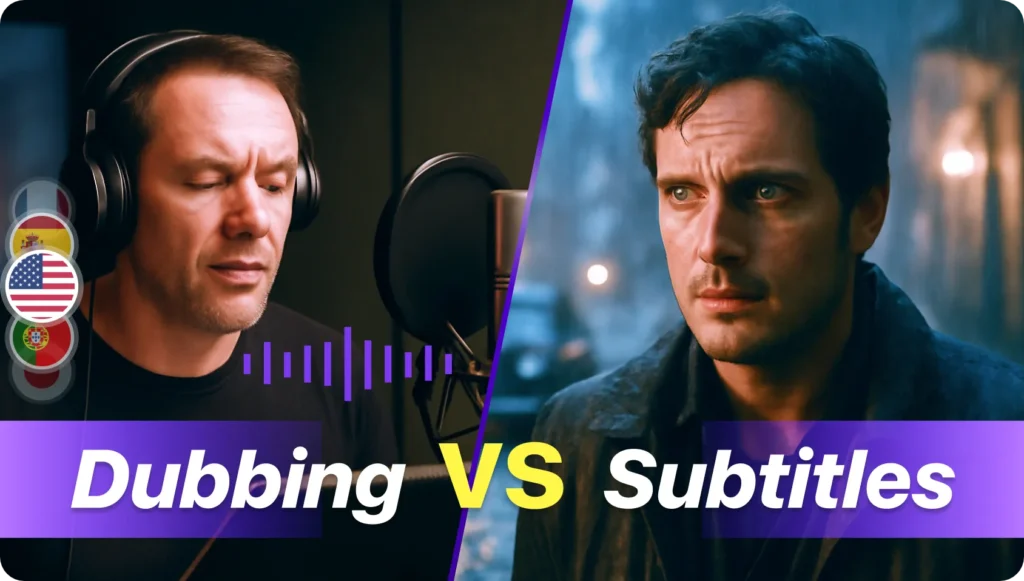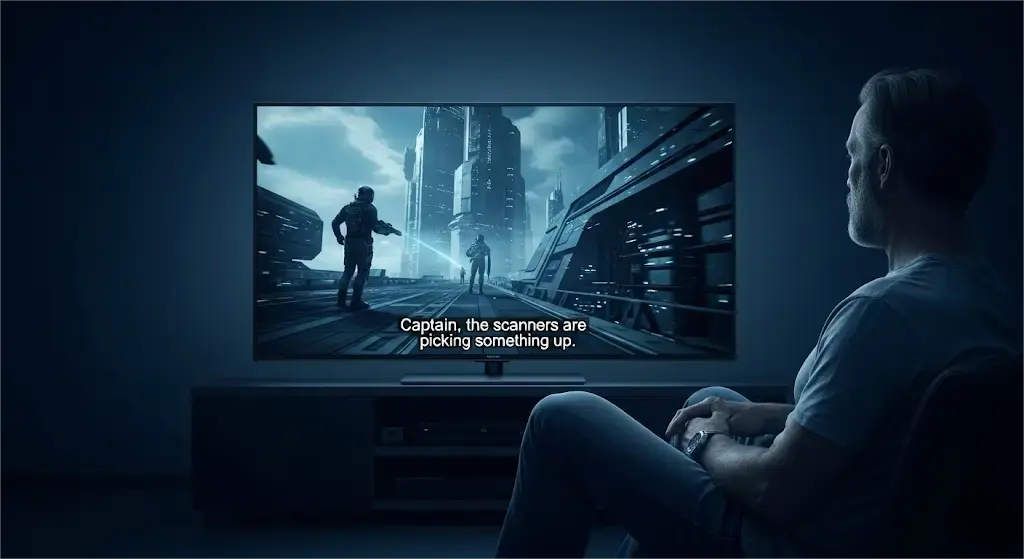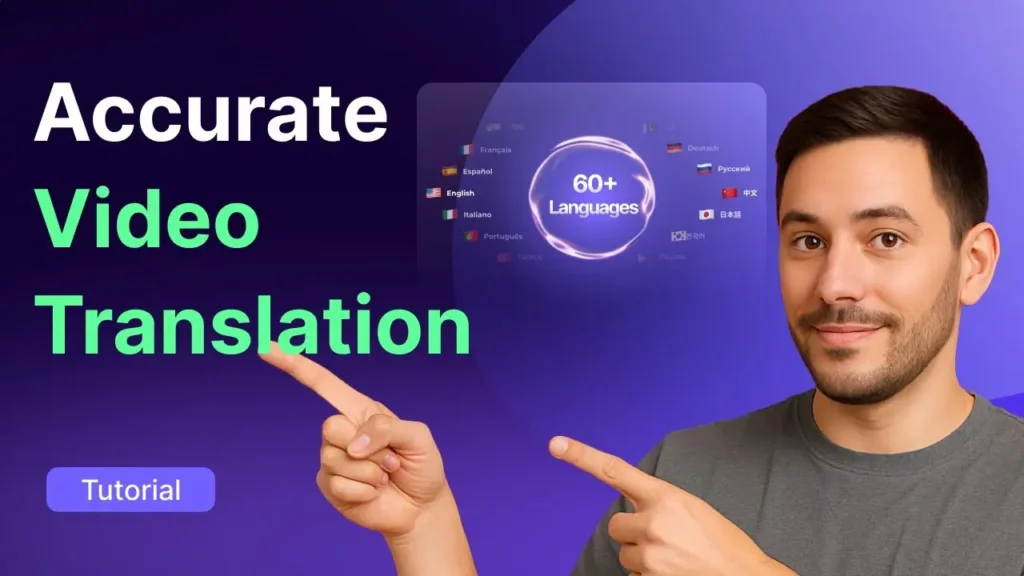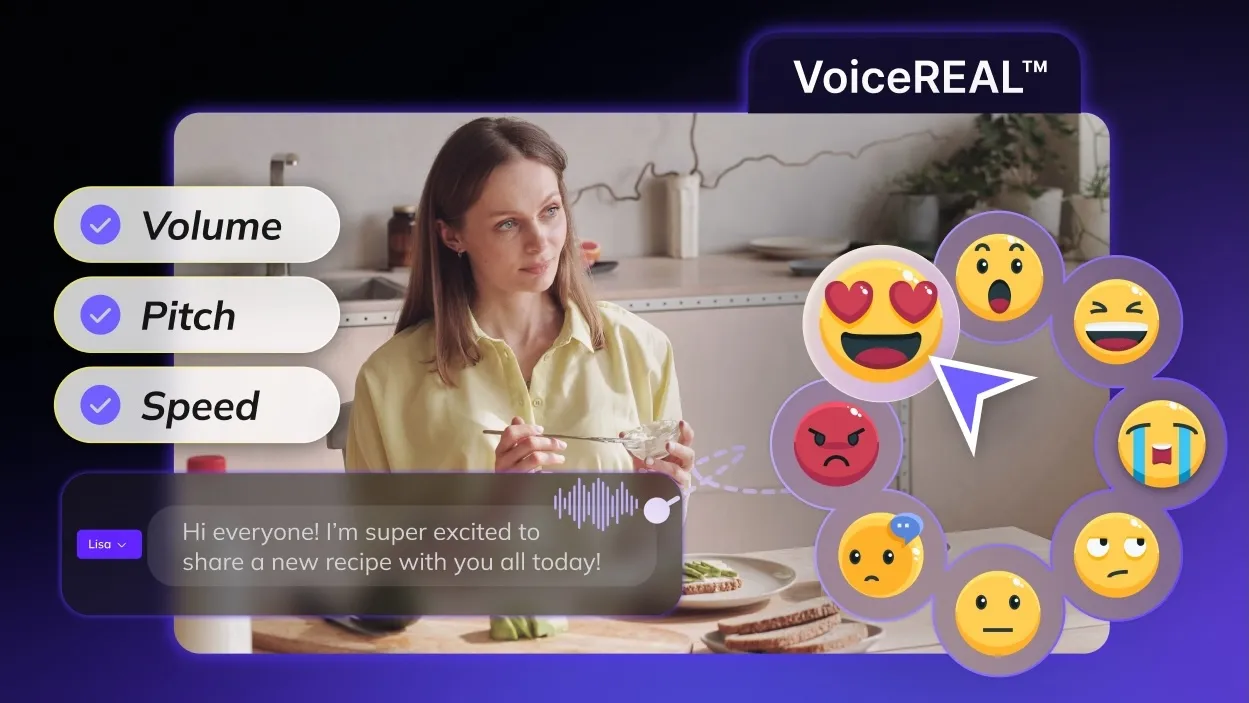Introducing the age-old debate: Dubbing vs. Subtitling
The debate between dub vs subtitles is an older one that tends to continue in the future, even between viewers. The main struggle lies in choosing between dub vs sub and which is the best choice to watch the movies made in other languages.

Subtitling tends to keep the original audio, and the text is translated to help viewers understand what is being said. Whereas dubbing replaces the original audio, the voiceover is translated into the viewer’s native language. The selection of subbed vs dubbed lies among the audience and their preferences for enjoying the content.
In the article below, we will discuss a detailed comparison between subbing vs dubbing that will help you decide which is the best choice according to the viewing experience.
Key Differences Between Sub and Dub
The main difference between subtitles and dubbing is how they translate the foreign language content for the viewers. Subtitles translate the text on the screen to let the audience listen to the original audio and read the dialogue. Dubbing translates the entire audio into a new voice in the native language of the viewer.

Subtitles are mostly considered as a better choice. They keep the original video intact and are a quick and affordable means for editing a video. However, the viewers have to read the text while they watch the video and some people may find it distracting.
Read More:

Dubbing eliminates the context of reading and gives a better experience. Dubbing is suitable for people who prefer audio in their native language. Also, it is expensive and also compromises the originality of the audio.
| Feature | Subtitles | Dubbing |
| Original Audio | Same as original | Replaced |
| Authenticity | Retains original voice and emotion | Does not retain the original voice and emotion |
| Viewer Action | Requires reading text | No text reading required |
| Cost | Low cost | High cost |
| Immersion | Low due to reading | High for people preferring native language audio |
| Production Time | Faster | Slow |
| Lip Sync | Not needed | Requires keeping the video natural |
| Accessibility | Offers less accessibility | Highly accessible |
| Cultural Nuance | Retains original expressions | Alters the original meaning |
Understanding Dubbing: Giving Your Videos a Native Voice
What is Dubbing?
Dubbing consists of completely replacing the audio with a translated version in the viewer’s native language. Dubbing consists of re-recording the dialogue in the required language and using voice actors to match the lip movement of the original. Some of the aspects involved in dubbing comprise the following:
- Translation: The original dialogues are translated into a new language, taking care of the lip sync and cultural nuances.
- Voice Casting: Voice actors are considered for dubbing whose voice best matches the tone of the original speaker.
- Recording: The voice actors have to record the script in the studio looking at the video to match the lip movements and emotion.
- Mixing: The new track is mixed with the original effects of sound so that natural audio is achieved.
So, What Exactly is Dubbing?
Think of it as a voice swap for videos. The original dialogue is replaced with a new version in a different language, so you can watch without reading.
The Dubbing Process
1. Transcription
Getting the original words down.
2. Translation
Adapting the script to a new language.
3. Voiceover
Recording the new voices.
4. Mixing & Syncing
Putting it all together.
The Upsides
More Immersive
Lets you get lost in the story without the distraction of reading.
Wider Audience
Opens up content to kids and people with visual impairments.
Stronger Emotions
Hearing feelings expressed in your own language can be more powerful.
The Challenges
Costly and Slow
It’s a big production that needs more time and money than subtitles.
Tough to Lip-Sync
If the new words don’t match the actors’ mouths, it looks awkward.
Loses Originality
You don’t get to hear the original performance from the actors.
Advantages of Dubbing
Dubbing offers various advantages to the viewers, and some of these include the following:
1.Immersive Native Language Experience
When a viewer hears a dialogue in their native language, they are more engaged with the visuals with minimal distraction and enhancing the immersion.
2.Broader Audience Coverage
Dubbing offers accessibility to people who find reading subtitles difficult, such as people with visual impairments or children.
3.Natural Viewing
If dubbing is of high quality, the viewers can enjoy the content without reading.
4.Stronger Resonance for Emotions
When emotions are expressed in the native language, it can create a very deep connection between the characters and the audience.
The Challenges of Dubbing
Dubbing comes with many advantages, but it also has some challenges. Some of these challenges that you may encounter are as follows:
1.Time-Consuming and Needs Resources
Dubbing requires a very extensive effort involving directors, translators, sound engineers and voice actors. Such effort takes more time and is costly compared to subtitling.
2.Challenge of Lip Sync
Lip Sync is a major challenge when it comes to dubbing the video. The movement of the actors may be difficult to match. Hence, when it is done poorly, it can cause a lot of distraction and impact the immersion expected from dubbing.
3.Dilemma of Voice Match
Matching the voice, emotion and tone with the original actor is highly challenging. It plays a vital role in maintaining the impact of the story.
4.Authenticity Trade-Off
Dubbing compromises the cultural richness and original content, disconnecting viewers from the authentic tone and voice.
Read More: Best AI Dubbing Tools for Video Localization
Understanding Subtitling: Bridging Language Gaps with Text
What is Subtitling?
Subtitling consists of adding subtitles to the audio dialogue in the videos. These subtitles appear at the bottom, and viewers can hear the actual audio and read the translation.
So, What Exactly is Subtitling?
It’s adding text to a video that translates the dialogue. You read what’s being said while still hearing the original actors’ voices.
The Subtitling Process
1. Transcription
Writing down the original dialogue.
2. Translation
Translating the text to a new language.
3. Timing & Syncing
Matching the text to the audio timeline.
4. Quality Review
Checking for errors and readability.
The Upsides
Quick & Cost-Effective
Much faster and cheaper to produce than dubbing.
Keeps it Authentic
You get to hear the original actors’ voices and emotions.
Great for Language Learners
Helps you connect words you hear to words you read.
The Challenges
Can be Distracting
Reading can pull your focus away from the actual video.
Nuance Can Get Lost
Jokes and cultural idioms don’t always translate perfectly in text.
Tough for Some to Read
Can be difficult for people with visual impairments to follow along.
The Advantages of Subtitling
Subtitling comprises its own set of advantages that make it a considerable choice, and some of these benefits are as follows:
1.Quickly Produced
Subtitling is very quick and cost-effective. It doesn’t require studio recording or a voice actor, reducing the complexities involved in production. Subtitling only needs a subtitle editor and translator to sync text with the audio. It is really quick, and when the budget is tight and the volume of content is large, it proves to be a suitable choice.
2.Preserves the Originality
In the process of subtitling the original audio is preserved and the viewers can hear real voices of the actor with the emotions and tone. It helps preserve the original performance and keep the videos authentic.
Some people do not prefer dubbed videos because they lose their authenticity, and here the role played by subtitles is commendable.
3.Supports Learning a Language
Subtitles can also work as an educational tool for people who are into learning languages. When you read the translation in the form of subtitles followed by dialogues in the video, you can learn new words. It enhances the pronunciation as well as the vocabulary of the viewers.
4.Highly Reliable for All Settings
Subtitles offer accessibility when hearing audio clearly is not possible. It helps to watch videos in noisy environments like public transportation,or airports. Even for people who are deaf and cannot understand the spoken content the subtitles can be of great help.
The Challenges of Subtitling
Subtitling has some challenges as well, and knowing them is crucial. Some of these comprise the following:
1.Distraction from Visuals
Many viewers may find it distracting to read subtitles while watching the video. It leads to taking away their ability to watch the facial expressions of actors and focus on the scenes properly.
2.Loss of Nuance
Subtitles have time constraints and this means that dialogues must be shortened so that they fit in the readable lines. Due to this, humor, emotional context and idioms lose their presence and hence original meaning ends up altering.
3.Lack of Accessibility
At some points subtitles are helpful for a lot of people but some people may find it challenging to read the subtitles due to their visual impairments.
Read More: Best AI Subtitle Translators for Video Localization
Key Factors to Consider When Choosing Between Subtitles and Dubbing
When choosing between subtitles and dubbing there is no one type that fits all universally. Whether to choose subtitles or dubbing depends on your audience, project goals and budgets.
Dubbing vs. Subtitles
There’s no single best answer. The right choice depends on your audience, budget, and goals.
When Dubbing Shines
For Maximum Immersion
Perfect for dramas and narrative films where reading distracts from the story.
For Younger Audiences
Ideal for children’s content, as kids may struggle to read subtitles quickly.
In Specific Regions
Countries like Germany, France, Spain, and Italy traditionally prefer dubbed content.
When Subtitles Shine
For Authenticity
Best for documentaries or art films where the original actor’s voice is vital.
On a Tight Budget & Deadline
Subtitling is significantly faster and more cost-effective to produce.
For Educational Content
Helps language learners connect spoken words with their written form.
Dubbing Shines When
Some of the factors that make you choose dubbing include the following:
- Immersion takes precedence in dramas or films with heavy narratives. Dubbing ensures an uninterrupted experience, keeping viewers engaged emotionally without any need to read the subtitles.
- The target audience is also considerable. For children, it is better to have them dubbed rather than subtitled. Children may not be able to read the subtitles at a faster pace.
- People from certain countries prefer dubbing or subtitling. Countries like Spain, France, Italy, and Germany have a tradition of providing high-quality dubbing for viewers.
Subtitles Shine When
The selection of subtitles also depends on certain factors, and these are as follows:
- Some genres need subtitles like art films, documentaries, etc, where keeping the voices original is important.
- Subtitling is less expensive, which makes it suitable for projects that have budget constraints.
- If quick content localization is required, then subtitles prove to be a faster choice compared to dubbing.
- In certain regions, audiences prefer subtitles in their videos, such as Benelux and Nordic countries. People here prefer learning languages and ensure authenticity in videos.
- Subtitles help language learners, and hence, they are suitable for content related to education.
How to Dubbing Videos with Translated Subtitles
The confusion of choosing between sub vs. dub will not stop anytime soon because it is more of a viewer’s personal choice. However, as a content creator, you can combine both in no time.
The best thing about it is that a dubbed video with subtitles can be achieved in less time and at a lower expense due to the AI-powered tools. Vozo AI is one of the best platforms that dubs your videos in multiple languages, ensuring that the original style is preserved. There are multiple languages that it can use to dub a video, like Chinese, Arabic, English, French, and many more.

The cherry on the top is that other than dubbing the video, it also generates automated subtitles in the target language. This two-in-one method helps you create videos that are accessible to every type of audience.
So, do you want to take your videos to the next level by adding subtitles and dubbing in them at the same time? Follow the steps suggested below.
How to Add Translated Subtitles to Videos?
- Go to the translation editor.
- Click the subtitles tab present on the left side of the panel and toggle Add Subtitles.
- Subtitles will take a minute to generate and will be embedded in the translation as well as the original video.
- If you want to add subtitles in the original language, choose the original. In translated videos, the subtitles are added by default.
- You can customize the subtitle style by selecting different options, including simple and standard designs.
- You can manually modify the subtitle style by changing its color, font, and size.
- Adjust the position of the subtitle in the video preview as needed.
How to Dub a Video?
To dub a video in Vozo AI, follow the steps given below.
- The first step will require you to create a Vozo account and access the dashboard. After you have created the account, look for “translate and redub” or “Edit script and Dub”
- Upload your video in the formats supported by Vozo including MOV, AVI, and MP4. You can also paste a link to a video from TikTok, YouTube, etc.
- Now select the target and source languages. Vozo supports auto-speaker detection; it also adds subtitles as an option.
- Select “Start Translation”, Vozo will translate, transcribe and dub the video automatically. You can refine the translations manually if needed.
- To fix timing, tweak translation, and adjust cultural accuracy, you can use a dashboard.
- There are more than 300 AI voices to choose from based on tone, gender, and age. You can also choose voice cloning.
- Preview the final video to check the voice and lip sync assignment. Make adjustments if needed.
- Export the dubbed video in the files like SRT and if you want to use it for YouTube export the video and subtitles.
Read More: Best AI Video Translators for Video Localization
Conclusion
As you have read above, your confusion regarding what’s the difference between subbed and dubbed video must be sorted. If you have an AI Video Translator like Vozo everything is under one place because it can translate and dub for you and even offer you with subtitles in your video.
Opting for tools like this not only makes the task easier but also gives you an opportunity to localize large volumes of content in no time. The best part is that it is even light on your pocket. So, sign up now!



